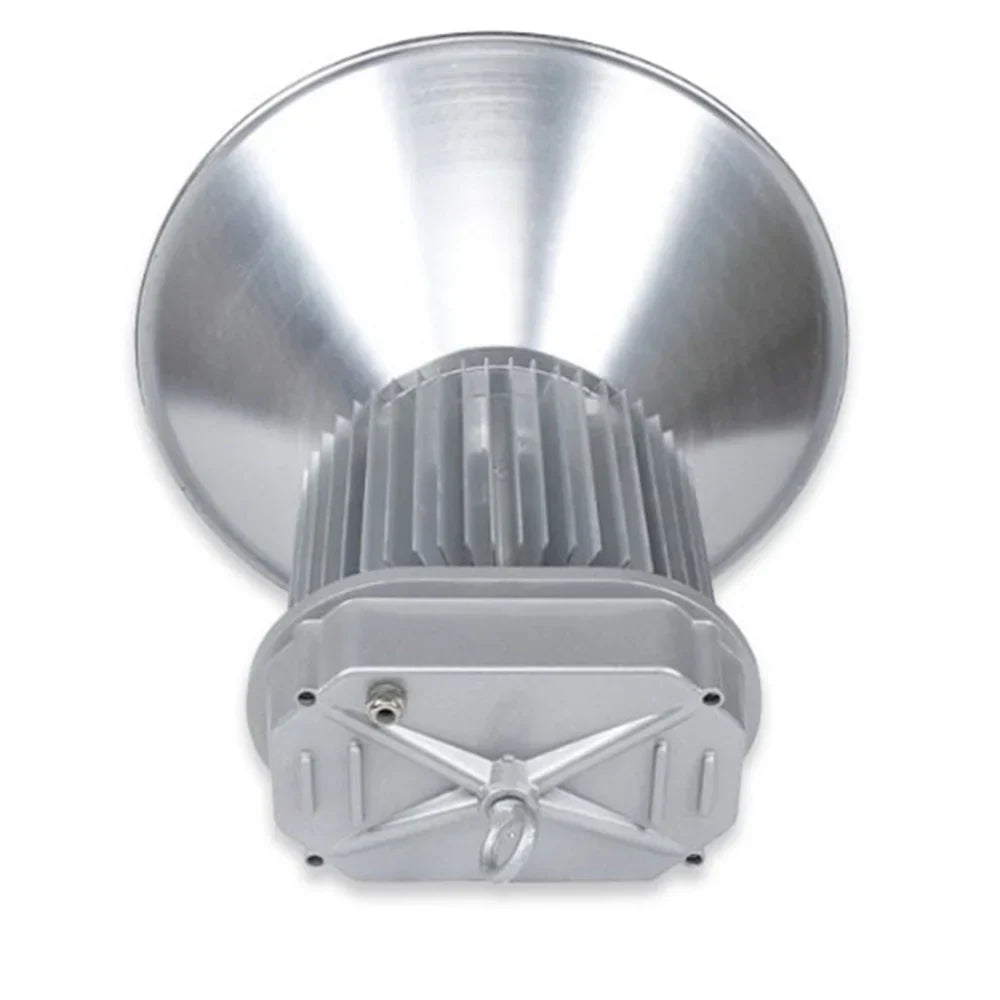In large-scale industrial and commercial environments—such as factories, warehouses, and gymnasiums—high bay lighting plays a critical role in ensuring proper visibility and productivity. With advancements in LED technology, modern high bay lights deliver superior energy efficiency and performance compared to traditional metal halide or fluorescent fixtures. However, evaluating high bay lighting performance requires careful consideration of key technical aspects: lumen maintenance, heat dissipation, and optics design.
1. Lumen Maintenance: Sustaining Brightness Over Time
Lumen maintenance refers to how well a light source retains its brightness throughout its lifespan. While all light sources experience some level of lumen depreciation, high-quality LED high bay lights maintain a much higher percentage of their initial brightness even after thousands of hours of operation.
-
L70 Rating: This metric indicates the point at which an LED light’s output falls to 70% of its original brightness. A high bay light with an L70 of 50,000–100,000 hours ensures stable illumination for years, minimizing maintenance costs and downtime.
-
Driver and Chip Quality: The use of premium COB (Chip-on-Board) or SMD LEDs with robust current regulation significantly reduces lumen decay.
-
Operating Conditions: Excessive heat, poor ventilation, or voltage fluctuations can accelerate degradation. Proper thermal management is therefore closely tied to lumen maintenance.
A high lumen maintenance rate not only enhances energy efficiency but also guarantees consistent lighting uniformity in large spaces, maintaining both safety and visual comfort.
2. Heat Dissipation: The Foundation of Longevity
Effective heat dissipation is essential to the reliability and efficiency of LED high bay lights. Unlike conventional light sources that radiate heat outward, LEDs generate heat at their junctions, which must be actively managed to prevent overheating.
-
Aluminum Heat Sinks: High-quality aluminum housings, often designed with fins or honeycomb structures, maximize surface area for faster heat transfer.
-
Thermal Conductivity Materials: The use of copper substrates or graphene coatings improves thermal flow, extending LED lifespan and maintaining stable color temperature.
-
Active vs. Passive Cooling: While most high bay lights use passive cooling through convection, advanced models may incorporate active cooling systems or hybrid designs for extreme environments.
A well-engineered cooling system not only ensures safe operation but also preserves lumen output and prevents premature failure of LED chips and drivers.
3. Optics Design: Controlling Light for Efficiency and Comfort
The optical design of high bay lights determines how light is distributed across a given area. Optimized optics minimize glare, reduce energy waste, and provide uniform illumination—essential in workspaces where visibility and accuracy matter.
-
Beam Angles: Typical high bay fixtures offer beam options such as 60°, 90°, or 120°, allowing customization based on ceiling height and lighting requirements.
-
Narrow beam (60°): Ideal for high ceilings (>10m), concentrating light on target zones.
-
Wide beam (120°): Suitable for lower installations to ensure even coverage.
-
-
Reflector Design: Aluminum reflectors and PC lenses with anti-glare coatings enhance efficiency while maintaining visual comfort.
-
UFO vs. COB Design: UFO-style lights with integrated lenses offer better light diffusion, while COB high bays with reflectors provide focused brightness.
Proper optics ensure not only high luminous efficiency but also reduce the Unified Glare Rating (UGR), contributing to a safer and more comfortable working environment.
4. Energy Efficiency and Application Versatility
Beyond performance parameters, LED high bay lights excel in energy efficiency and versatility. With luminous efficacies exceeding 130 lm/W, they drastically cut energy consumption compared to legacy systems. Many models feature IP65 waterproof ratings, dimmable drivers, and instant start-up, making them suitable for diverse conditions—ranging from humid factories to expansive warehouses.
Moreover, compatibility with smart control systems (like motion sensors or daylight harvesting) enables further optimization of energy use and maintenance schedules.
Recommended High Bay Lighting Solutions
Below is a selection of high-performance LED high bay lights designed for industrial and commercial applications.
| Product Name | Key Features | Link |
|---|---|---|
| 120W High Power COB IP65 Waterproof LED High Bay Light | COB chip, aluminum reflector, IP65 waterproof | View Product |
| 150W High Power COB IP65 Waterproof LED High Bay Light | High brightness, durable aluminum housing | View Product |
| 200W High Power COB IP65 Waterproof LED High Bay Light | Wide beam reflector, industrial-grade durability | View Product |
| 300W High Power COB IP65 Waterproof LED High Bay Light | Maximum output, large-area illumination | View Product |
| UFO LED High Bay Light 100W | 13,000lm, 130lm/W, 6500K daylight white | View Product |
| UFO LED High Bay Light 150W | 19,500lm, 130lm/W, wide-area coverage | View Product |
| UFO LED High Bay Light 200W | 26,000lm, IP65 waterproof, high efficiency | View Product |
Conclusion
The performance of high bay lighting is defined by more than just wattage or brightness—it’s a balance of lumen maintenance, thermal management, and optical precision. Selecting the right combination of these factors ensures not only long-term reliability and energy efficiency but also an improved lighting environment that supports safety and productivity.
Whether upgrading existing facilities or planning new installations, investing in well-engineered LED high bay lights is a proven way to achieve consistent illumination, reduced energy costs, and a sustainable lighting solution for industrial spaces.

